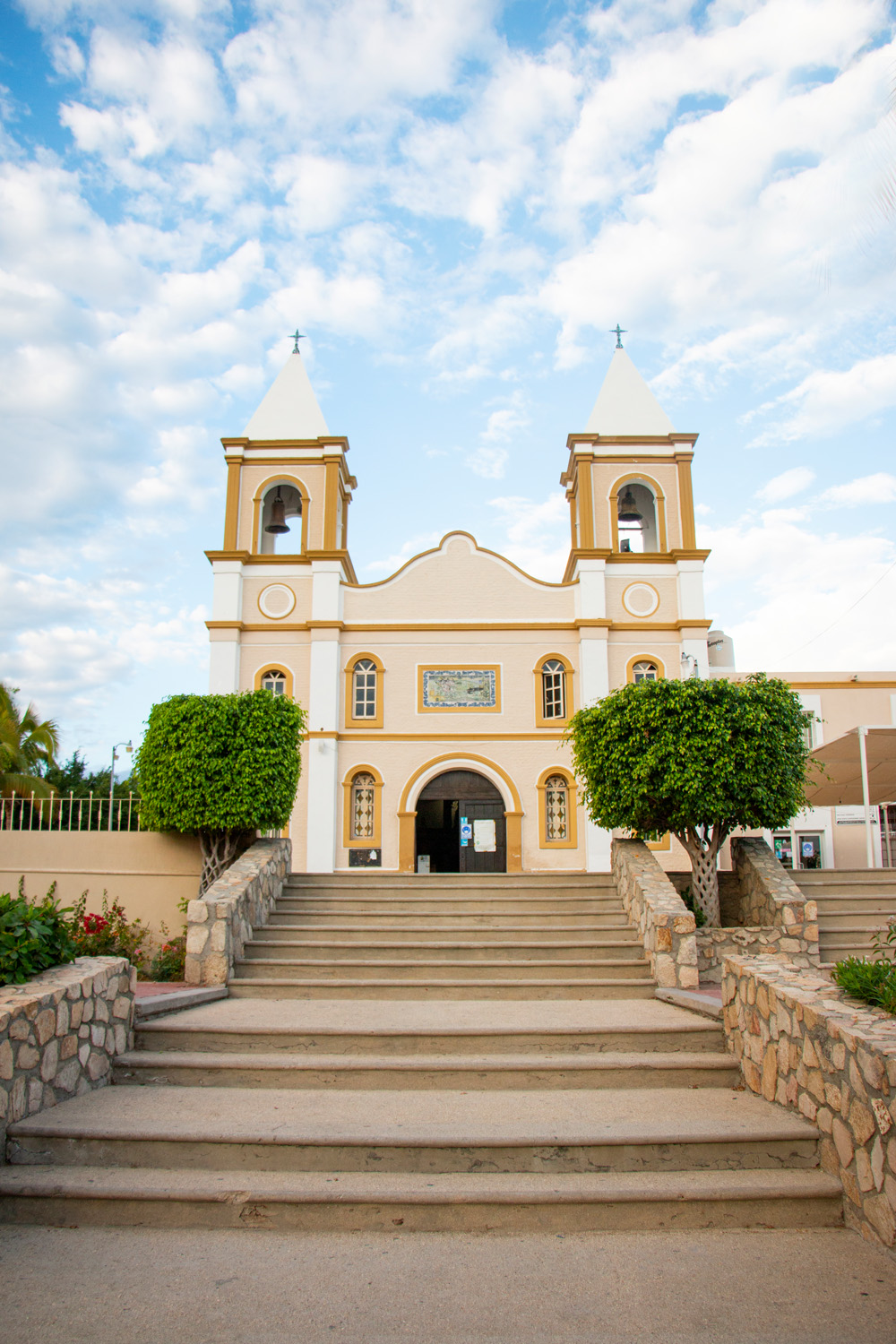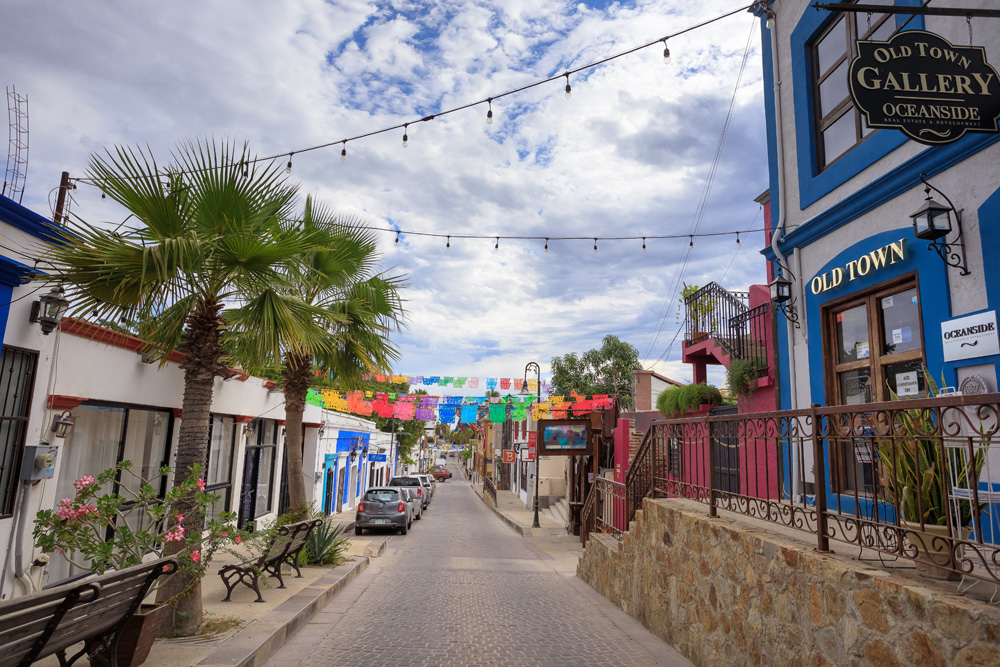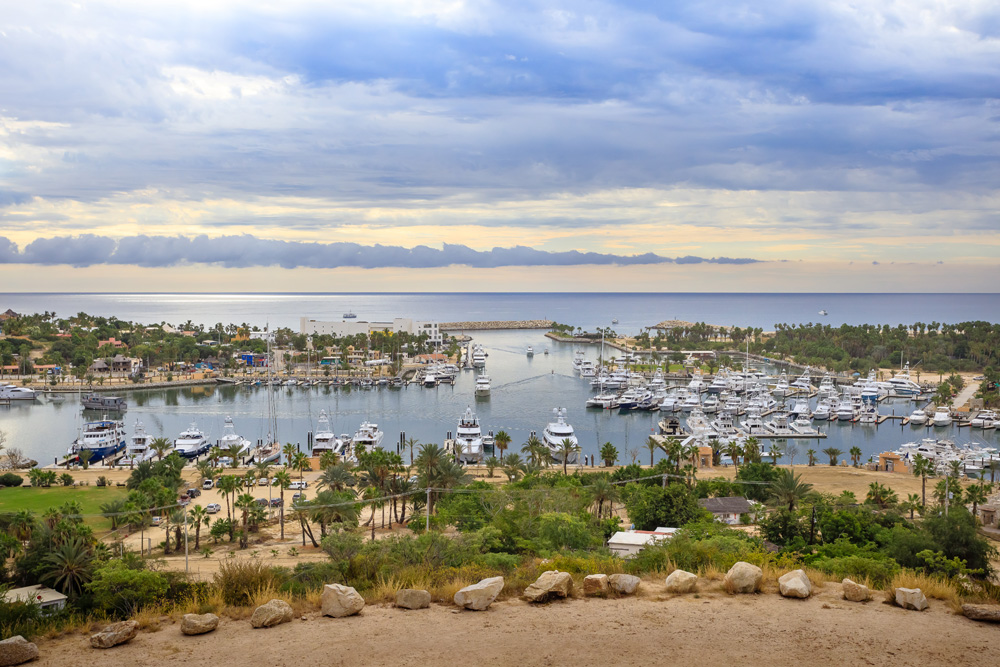San José del Cabo
The Manila Galleon Trade & Early Colonization Efforts
The world’s largest trade route began in 1565 with the Manila Galleon, making the return voyage (tornaviaje) from Acapulco to the Philippines. These galleons would stop at what is now Estero Josefino – known by the Pericúes as Añuití and later called Aguada Segura or San Bernabé Bay by sailors – to replenish water supplies. Over time, the route’s demands necessitated a permanent settlement at the tip of California for provisions and protection against pirate attacks.
However, all colonization attempts failed until 1697, when the Mission of Our Lady of Loreto was founded by the Jesuits. Due to resource scarcity and the peninsula’s harsh geography, the original goal of establishing a support station for the Manila Galleon wasn’t achieved until April 8, 1730, with the founding of the Mission of San José del Cabo by Jesuit priests Nicolás Tamaral and visitor José de Echeverría.
Missionary Challenges & Rebellion
The mission initially prospered, but cultural impositions of civilization and evangelization sparked discontent among the Pericúes people. In 1734, an armed rebellion erupted, resulting in the deaths of priests Nicolás Tamaral (San José del Cabo) and Lorenzo Carranco (Santiago Mission). Spanish sovereignty wasn’t fully restored until 1737.
The Bourbon Reforms & Scientific Expeditions
As part of the Bourbon Reforms, the Jesuits were expelled from all Spanish territories in 1767. Franciscan priest Juan Morán then took charge of the mission. In 1768, visitor José de Gálvez introduced private property concepts through land grants to indigenous people and settlers.
A significant astronomical project occurred on June 3, 1769, when French astronomer Jean Baptiste Chappe d’Auteroche successfully observed Venus’ transit at the mission to calculate Earth’s distance from the sun. Tragically, most of this Franco-Spanish expedition died in an epidemic, including Chappe d’Auteroche, who was buried at the mission.
19th Century Transformation
By the early 1800s, indigenous populations had dramatically declined while Spanish immigrants, miners, merchants, and sailors settled in the area. The mission shifted focus to agriculture and livestock. Key developments:
-
1824: The region began functioning as a municipality
-
1830: Governor Mariano Monteverde’s decree transformed San José del Cabo from mission to town
-
1846-1848: During the Mexican-American War, local hero Mauricio Castro Cota led defenses against U.S. naval invasion. Lieutenant José Antonio Mijares died defending the town on November 19-20, 1847
Economic Growth & Modernization
In the late 19th century, San José del Cabo achieved villa status, with sugar cane and cattle ranching boosting maritime trade. Population growth spurred new social classes and public services:
-
Education
-
Postal service
-
Street lighting
-
Security
-
Sanitation
Early 20th Century: Resilience Through Crisis (1900-1920)
The first two decades brought severe challenges:
-
Devastating droughts and epidemics reduced the population
-
Hurricanes destroyed public and private buildings
-
During the Mexican Revolution (1910-1920), federal forces occupied the town until 1914, causing:
-
Near-total port closures
-
Supply shortages
-
Collapse of previously thriving trade networks
-
Despite these hardships, key infrastructure projects advanced:
-
1904: Municipal Palace tower and public clock installed
-
1910: First potable water system implemented
-
1916: Urban expansion plan enacted
The Golden Age (1920-1940): Modernization
San José del Cabo entered its economic renaissance:
-
Population growth and revived agriculture/livestock sectors
-
Road construction:
-
1920: La Paz highway
-
1927: Cabo San Lucas route
-
-
Historic Center renovations after the 1918 hurricane:
-
Municipal Palace tower
-
Plaza Mijares
-
-
1925: “La Voz del Sur” store became the region’s second Ford dealership (Models A & T)
The 1930s tomato export boom to the U.S. drove prosperity until:
-
1940s setbacks: Natural disasters, falling tomato prices, and WWII’s shipping cost surges
Mid-Century Transformation (1950s-1960s)
Tourism Beginnings
-
1952: Casa O’Fisher Hotel opened (first sportfishing-focused lodging)
-
1956: Hotel Palmilla debuted, hosting American celebrities and politicians
Public Services Expansion
-
Major upgrades to:
-
Healthcare systems
-
Electricity grids
-
Water infrastructure
-
-
1960s education milestone: Inauguration of Antonio Mijares Secondary School
-
First sportfishing tournaments held at Palmilla and Cabo San Lucas hotels
Municipal Evolution (1970s-1980s)
-
1971: Became a delegation of La Paz Municipality
-
Economic shift to tourism:
-
1972: Transpeninsular Highway completion
-
1977: Los Cabos International Airport opening
-
1970s: Government launched Los Cabos Master Development Plan
-
-
April 8, 1980:
-
Celebrated 250th anniversary of Mission founding
-
Officially became Municipal Seat of the new Los Cabos Municipality
-




